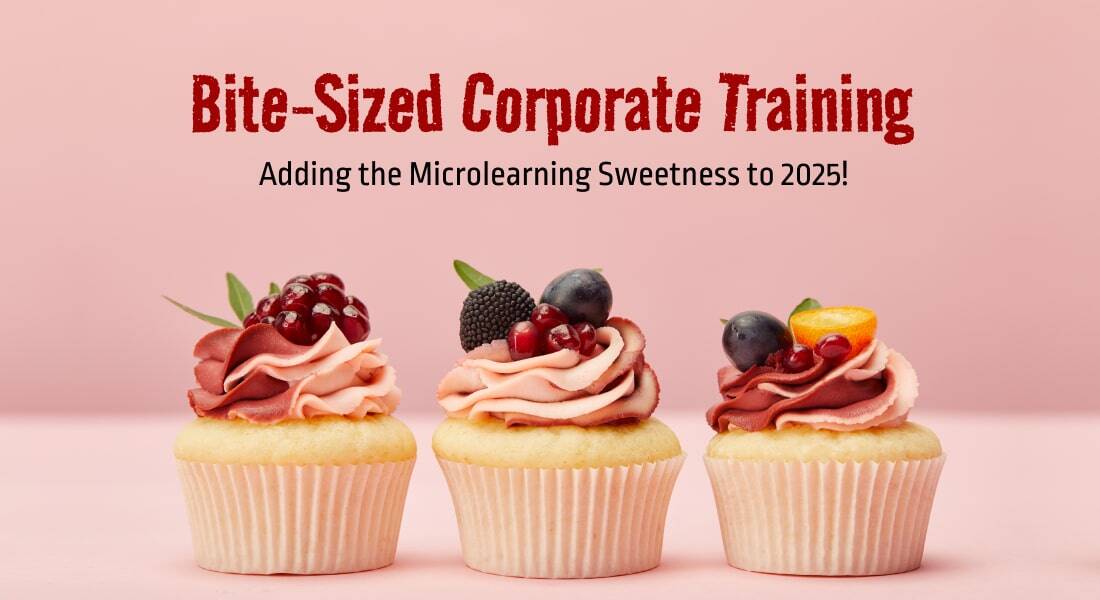What are the Key Benefits of Bite-Sized Learning? [Infographic]
![What are the Key Benefits of Bite-Sized Learning? [Infographic] What are the Key Benefits of Bite-Sized Learning? [Infographic]](https://blog.commlabindia.com/hubfs/blogs/bite-sized-learning-key-benefits-infographic.jpg)
What if someone told you to climb Mount Everest? You might consider. But what if they added that you have to climb Everest in a single go, without any rest? Now that’s daunting. Isn’t it? Learning a new complex skill can feel just as overwhelming. But on the other hand, imagine if you could conquer Everest, one manageable base camp at a time. When it comes to conquering learning new skills in corporate training, bite-sized learning, also known as microlearning, offers a manageable solution. It breaks down complex subjects into bite-sized, achievable modules, making the learning journey less intimidating and more successful. Unlike traditional learning methods that can feel like information avalanches, microlearning offers focused instruction, delivering specific skills or knowledge in short, engaging bursts.
In this blog, we’ll take a closer look at the benefits of bite-sized learning and learn about best practices for designing effective microlearning courses. So are you ready for a micro-adventure for mega results? Let’s begin!
Key Benefits of Bite-Sized Learning
→ Download Now: Instructional Design Strategies for Engaging Training Courses!
Best Practices to Design Effective Microlearning Courses
Know Your Target Audience
Having a thorough understanding of your target audience and clarity on their training needs will help you ensure learner-centric, engaging learning courses. You can consider factors like experience, educational background, etc., to know your learners better and conduct Training Needs Analysis (TNA) to gain an idea about their learning requirements. Leveraging this information, you can tailor the microlearning content and adjust the difficulty level. In microlearning, it’s important to focus on a single learning objective for each module.
Keep it Short and Relevant
Microlearning thrives on brevity. So aim to keep your microlearning videos somewhere between 7-15 minutes. This duration ensures that the learning process doesn’t become boring and monotonous. Avoid including unnecessary information in the modules as it might just confuse the learners.
Include Multimedia Elements
With microlearning, you can easily skip the hassle and monotony of text-heavy lectures! It includes a variety of microlearning formats like infographics, videos, interactive quizzes, audio, animations, digital flashcards, etc. These elements promote active learning and keep learners engaged, thereby boosting knowledge retention.
Summing It Up!
From catering to short attention spans to boosting knowledge retention, microlearning offers a multitude of benefits. It also helps in facilitating just-in-time learning and performance-support which contribute in maximizing productivity and efficiency. However, to enjoy all these benefits, designing effective microlearning courses is the key. Now that you’re well-versed with the benefits and best practices, it’s time to make the most of microlearning to provide your learners with the learning experiences that help them grow and your business succeed. In fact, a good understanding of instructional design strategies can come in handy while trying to design engaging and immersive learning experiences. Check out our free eBook on instructional design strategies and level up your training courses today!





![7 Best Practices While Creating Microlearning Videos for Employee Training [SlideShare]](https://blog.commlabindia.com/hubfs/Imported_Blog_Media/microlearning-videos-best-practices.jpg)

